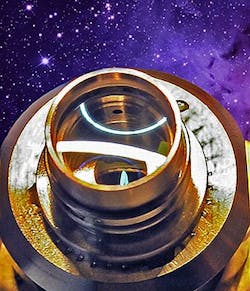Aerospace chooses semiconductor laser from Avo Photonics for CubeSat small satellites
HORSHAM, Pa., 4 Jan. 2013. Satellite designers at the Aerospace Corp. in El Segundo, Calif., needed a semiconductor laser illumination source for use on CubeSat miniaturized spaceborne satellites. They found their solution from Avo Photonics Inc. in Horsham, Pa.
Aerospace Corp. deigns chose Avo Photonics because of Avo's unique capabilities in rugged space-qualified manufacturing, including precision optical alignment, welding, and environmental sealing, Avo officials say.
The program required Avo to produce a 10-Watt continuous-wave beam at a wavelength of 795 nanometers within a few degrees of the CubeSat reference axis system.
“We chose Avo because of their experience, and we were confident that they would deliver cost-effective, reliable, rugged flight hardware,” says Renny Fields, senior scientists at the Aerospace Corp., which is a federally funded research and development center (FFRDC) for the U.S. Air Force and the National Reconnaissance Office to support national security space programs.
| Related stories -- DARPA selects Lockheed Martin for Airborne Launch Assist Space Access program -- NRL launches nano-satellite experimental platforms -- NASA flight facility launches nanosatellite. |
A CubeSat is a type of miniaturized satellite for space research that usually has a volume of one liter, has a mass of no more than 1.33 kilograms, and typically uses commercial off-the-shelf (COTS) electronics components.
Operating at 30 percent efficiency, the high-powered optical source from Avo Photonics is designed to run over numerous illumination cycles. Avo tested the optoelectronic performance of the lasers over the defined qualification limits for temperature, vibration and shock.
Decreases in size and mass of CubeSat spacecraft allow for relatively low launch cost while using cutting-edge components. Large satellites can take five to 10 years to design, build, and fly, while CubeSats can be completed and launched in as little time as one to two years.
For more information contact Avo Photonics online at http://avophotonics.com, or the Aerospace Corp. at www.aerospace.org.

